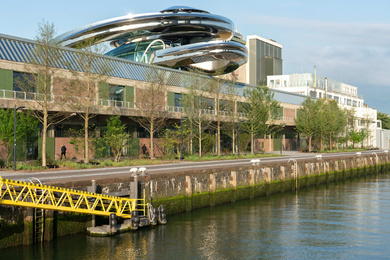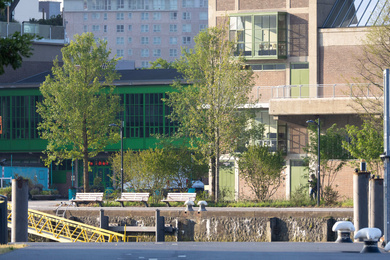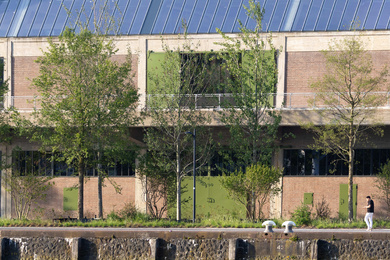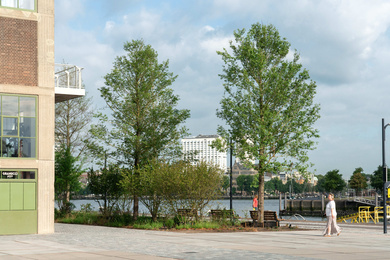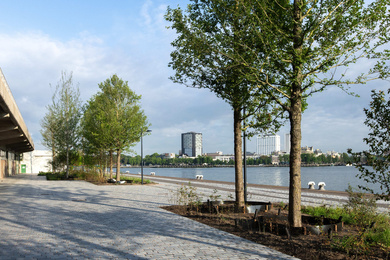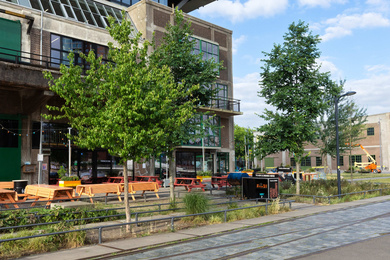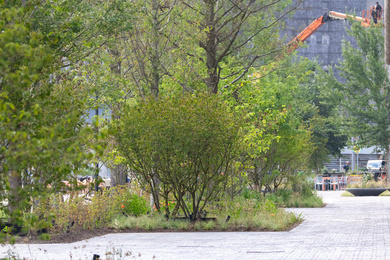Fenix is the new art museum about migration in Rotterdam. Originally, the building was a warehouse that has recently been completely renovated. Not only has it been made future-proof, but a lot of greenery has also been added to control the indoor climate and to make the area around the building more attractive and biodiverse. The most important architectural addition to the building is a “tornado”, a double spiral staircase that winds its way up from the ground floor and ends at a viewing platform. The tornado is made of stainless steel and, because Fenix has constructed the largest green roof (6,000 m²) in Rotterdam, it changes colour with the seasons. The reflection creates a ripple of flower colours, as if you were throwing a stone into water.

The outdoor space was initially planted by the municipality with very small plants. Fenix took this on after consultation with the municipality and opted for replanting with large trees to create an immediate positive effect. After all, the museum experience begins as soon as the building comes into view for visitors. Care was also taken to maintain unity with the surroundings and create a green artery connecting the surrounding parks: Fenix 1, Kaappark and Buizenpark.

What is striking about the planting plan is its scale and completeness. Trees of various ages and sizes, multi-stemmed trees, shrubs, perennials and flower bulbs have been used to create the longest possible flowering period. The different crown heights and tree shapes make it immediately attractive to look at. The planting of large elms has created an elongated volume of foliage with a sheltered side for butterflies (elm page) to migrate along the normally windy quay. The Ulmus “New Horizon” species was chosen with a link to history, as the history of the place is one where hundreds of thousands of migrants left at the end of the 19th century in search of a better life, often to North and South America.

In brief:
- Largest green roof surface area in Rotterdam, to control the climate in the building and create extra living space for biodiversity.
- Large scale with maximum size planting beds along the length (360 metres!) of the building to encourage insect migration and combat urbanisation, benefiting users.
- Self-financing of large trees for immediate impact.
- The elm trees used are popular as host plants for the white admiral butterfly.
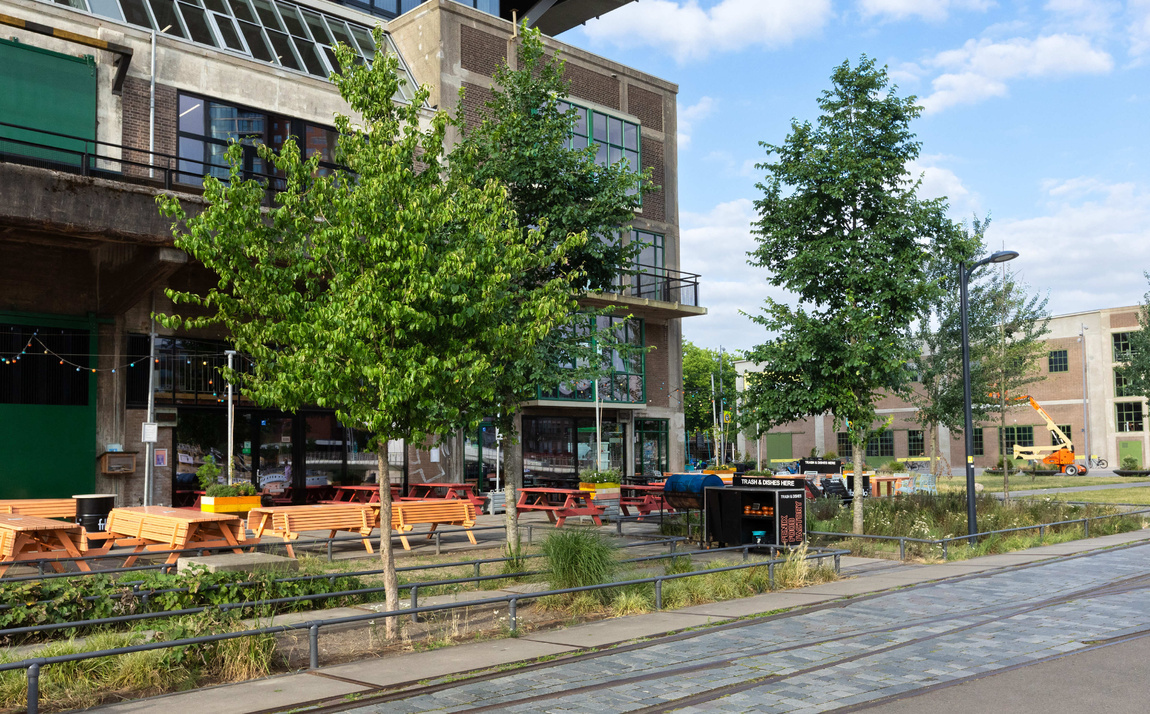
- LocationRotterdam, The Netherlands
- Area3 hectares
- DesignEbben Tree Nursery
- Contact personDirk Ebben
- Planting
- GroundworksEbben Project Support

